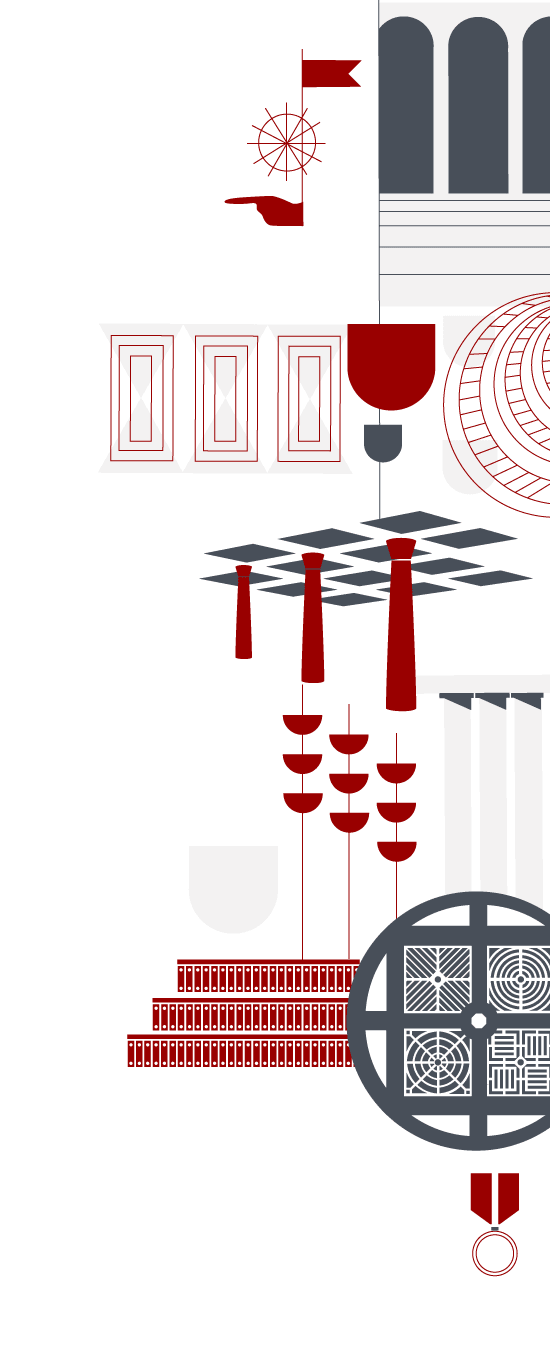
Palazzo Cavalli
The Palazzo was built by the Foscari family between the late 15th and early 16th centuries. It was purchased in the mid-17th century from the local superintendent Marin Cavalli, who totally renovated and commissioned the frescoes which now embellish it.
In 1760 the building was inherited by the Bollani family. During Austrian rule it became a barracks (1818-1836) and in 1840 was purchased by the State and used as a customs-house until 1890.
In the last decade of the 19th century Palazzo Cavalli was donated to the then Royal University and transformed into the School for Engineering. It was used as such until 1932.
The entrance hall is in the shape of an inverted T. The ground floor also contains three other rooms, called "Sala delle storie bibliche” (Hall of Stories from the Bible, also known as Hall of the Hearth), "Sala della Caccia” (Hunting Hall) and “Sala dei Telamoni” (Hall of the Giants).
The decoration of the rooms on the ground floor was carried out in the early 1680s and is attributed to Michele Primon, due to artistic affinities with the frescoes of Villa Contarini (at Piazzola sul Brenta, just north of Padova).
The grand staircase is the work of Antonio Felice Ferrari and Giacomo Parolini. The ceiling now appears as a simple frame surrounding the sky, and no figures are depicted. It was painted in the 19th century when, because of excessive damp, the original ceiling, painted by Louis Dorigny, was lost.
The large hall on the first floor (piano nobile) echoes the T-shaped plan of the ground floor, with double doors and a ceiling decorated with painted beams. The widest part of the hall is also the highest, as it includes a gallery. The salon was decorated with frescoes, probably in the early 18th century, by Dorigny.
Palazzo Cavalli
via Giotto, 1 - 35121 Padova - Italy


